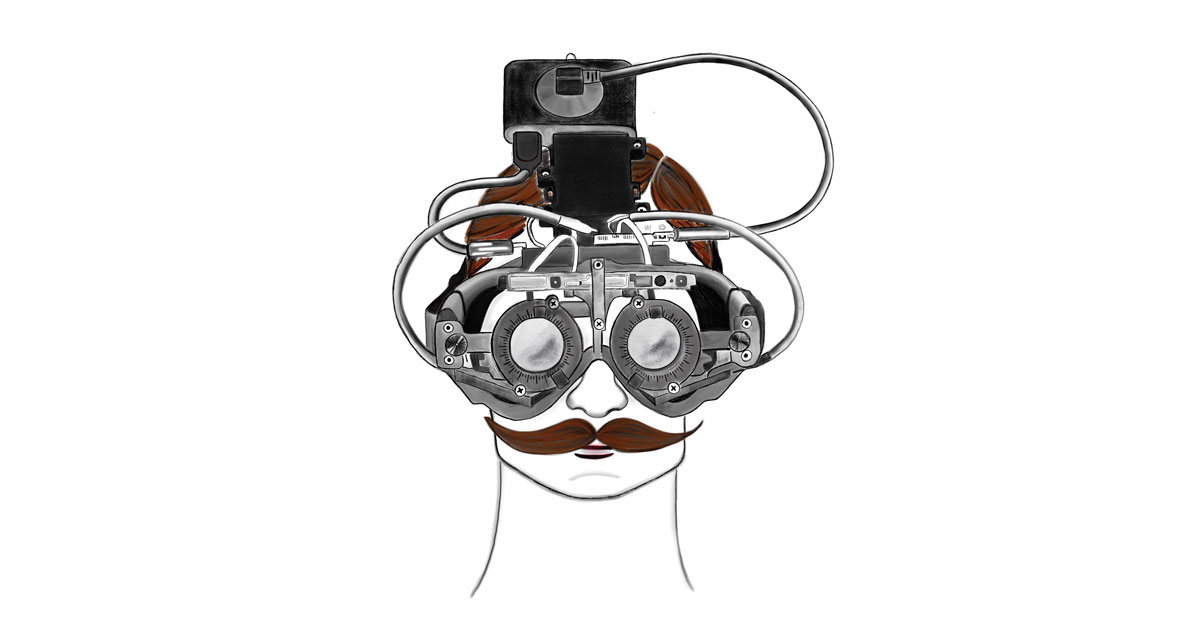Presbyopia—that pesky trouble with small print—often begins in the mid-40s and eventually strikes everyone. Some people make do with drugstore reading glasses, but many embark on decades of optometrist visits and prescription fine-tuning. Progressive lenses provide vision correction at multiple distances but limit depth perception and peripheral acuity, which increases the likelihood of falls and accidents.
The solution? Autofocals: fluid-filled lenses that boast eye-tracking sensors and, like our (younger) eyes, change pressure to adjust focal length. “More than a billion people have presbyopia,” says Gordon Wetzstein, assistant professor of electrical engineering. “We’ve created a pair of autofocal lenses that might one day correct their vision far more effectively than traditional glasses.”
The challenge? Condensing the tech into fashionable tortoiseshell frames. The heavy prototype resembles postapocalyptic headgear, replete with exposed cables and gadgetry. But if society collapses, the risk of falling will likely increase. Maybe the autofocals are perfect just the way they are.
Deni Ellis Béchard was a senior writer at Stanford. Email him at stanford.magazine@stanford.edu.



